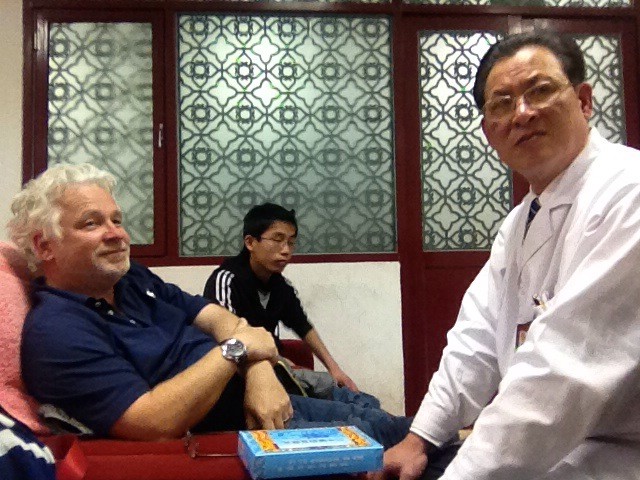
With this special medicine from Tibet, my life would be saved. Only $309
While taking a break in the hospital, I am reading through Facebook and I read about “Western medicine,” referring to how we physicians treat patients. The implication is there is a body of knowledge, or “Eastern medicine,” that has something to offer for treatments and cures of modern disease that we physicians in the West are clueless about.
But today, knowledge of medicine is not in a vacuum. Worldwide medical journal articles and texts are translated immediately, and findings across the world are instantly transmitted to our iPads or other electronic readers. It is ironic that people on Facebook make an assumption that “Eastern medicine” is a big secret that they have discovered. There is no secret in Japan or China about how to treat or cure disease that we don’t immediately hear about and test. Is there some ancient wisdom, though, things that didn’t get translated? So we go to the mid 1800s, at a time when “Eastern medicine” had developed with no influence from the West.
There was a doctor, Takaki Kanehiro, from the region of Satsuma in Japan. He was classically trained in Japanese (Eastern) medicine. Early in his career as a physician, he was laughed at when a doctor from Nagasaki said, “There are no doctors worth mentioning in Satsuma.” The system of medical education where he was from was an apprenticeship in the venerable eastern medicine. Much of it learning of herbs and potions in ancient texts passed on from one generation to another.
Takaki’s sense of embarrassment led to him seeking to further his knowledge as a physician, and that led him to study of Western medicine, under the British physician William Wills in 1870, who was living in Japan. Later, Takaki travelled to London, and St. Thomas’s Hospital (across the river from Westminster Abbey), where he stayed for five years and even won St Thomas’s highest awards for his work. He learned from Western medicine not just a new apprenticeship with the techniques of the day, but a method of thought—the scientific method.
Takaki Kanehiro is revered because he helped to found and foster what has become medical education in Japan, translating from what was a traditional Eastern style to the scientific method that provided Japan with the tools for the study of disease. It was because of learning the scientific method of thought that he hypothesized that beriberi was a nutritional deficiency. Thus it turns out that Western medicine cured in Japan. (Imagine when they read this story on Facebook!).
How Western Medicine Cured Beriberi – a disease that Eastern medicine couldn’t
In the latter half of the eighteenth century, beriberi was widespread throughout Southeast Asia, especially in Japan, as well as China, Indonesia, Java, and the Philippines. A little over one third of all illness in the navy was from beriberi. Beriberi is a disease caused from a deficiency of vitamin B1 (thiamine). Without thiamine, the body cannot utilize the energy from carbohydrates, fat, and protein. Symptoms include weight loss, weakness, pain in the limbs, impaired sensory perception, emotional disturbances, irregular heart rate, and swelling of the lower extremities (edema). It might start with difficulty walking, followed by tingling or loss of sensation, mental confusion, pain, and can progress on to heart problems and death. The confusing complex of symptoms all comes from the deficiency of just one vitamin.
Over the course of several years, Takaki looked at various factors as a cause of beriberi—clothing, living quarters, and even the temperature of the places the ships went. He noted that the officers of the ship rarely contracted beriberi, the officers had access to more varieties of foods, while lower ranks, and particularly the prisoners on the ships, had more beriberi and tended to eat primarily polished white rice. Takaki also noted that when ships were in port, many of the sailors with beriberi recovered. His belief that diet was a component of beriberi had to be tested.
His experiment was set up with a ship that was given increased provisions of bread, meat, and vegetables. The ship followed the route of a control ship that had the usual provisions. The control ship had 169 cases of beriberi among the 370-member crew, with twenty-five deaths. In the test ship, there were no cases of beriberi. This prompted reforms to increase the food provisions among the Japanese Navy. In 1882, when Takaki had started looking at beriberi there were an average of 404 cases of beriberi for every one thousand sailors, and after his reforms were implemented in 1886 there was less than one case per thousand.
Fifteen years after Takaki published his success in treating beriberi, the world had still not been convinced that beriberi was caused by a nutrient deficiency. In those days, iPads were not readily available, and few in Europe read Japanese medical journals – in part because their “Eastern” medicine had proven itself unhelpful. On the Dutch colony of Java, a physician named Dr. Christiaan Eijkman was assigned to find the “microbe” associated with beriberi. Eijkman observed that chickens fed white, polished rice developed classic beriberi. When Eijkman fed unprocessed rice to chickens, the chickens didn’t get beriberi, even when inoculated with the “germs” from chickens that had beriberi.
In 1901, Eijkmann interpreted beriberi as a deficiency syndrome. For his work he was awarded the Nobel Prize in medicine in 1929. Takaki had died in 1920, nine years before the prize was awarded; the Nobel Prize is never given posthumously.
Eastern medicine didn’t cure beriberi, but someone who was classically trained in the west did.
